Where do ideas come from?
Recently I’ve been working on a talk about using reflecting surfaces in gardens – things like mirrors, water, metal and glass. In the process, I’ve been thinking about gardens in a general way. What is the point of adding a reflecting surface to a garden – a piece of shiny metal, for example? Are the risks of a reflected glare worth whatever magic happens when you see the real thing and its reflection simultaneously?
More specifically, I’ve been thinking about what constitutes a reflection, both the literal and the metaphoric kind. And doing that, I’ve been thinking about my own garden, remembering why I made this choice or that, thinking about what I still hope to do, and why.
In other words, I’ve been reflecting.

The Skating Pond was inspired by a painting that hung at my grandparent’s house in Virginia. So where better to start reflecting on the relationship between inspiration and outcome?
When I first began work on the garden at Glen Villa, I had very few ideas of what I wanted to accomplish. I knew I didn’t want a formal garden – that seemed out of place in a rural setting — so the existing rose garden was turned into lawn. I thought I was aiming for a natural landscape. (I now believe such things are fictions.) but what looked natural was vaguely dissatisfying. I wanted more. I wanted to improve on nature, to make it more floriferous, prettier. The trouble was, I didn’t know how.
So I began to read – books, magazines, garden catalogues, anything I could get my hands on. What I read was inspirational. What I saw was even more so. The photo on the front of a garden catalogue inspired the colour combination that became the dragon’s tail.
The sinuous curves of Fletcher Steele’s rose beds at Naumkeag inspired the shape.
An article in the Montreal Gazette show-cased a new area at the Montreal Botanical Garden. As soon as I saw it, I knew how to use the pieces of broken and burnt china I had found exploring the woods.
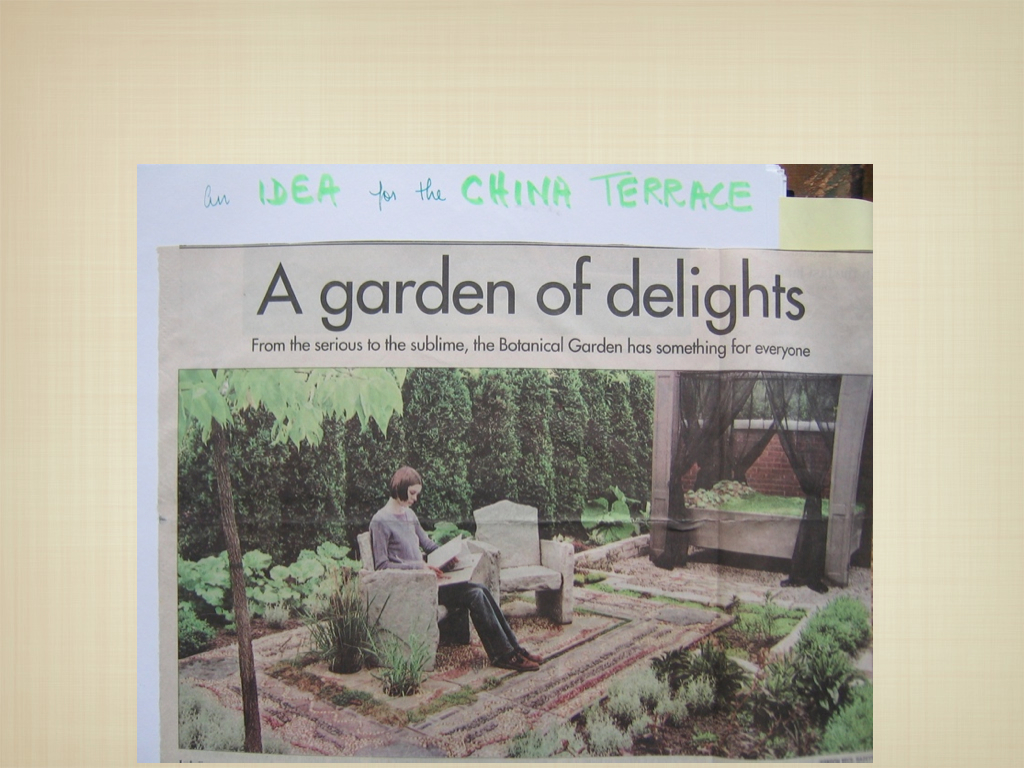
The living spaces constructed at the Montreal Botanical Garden suggested a way to use the broken china I had discovered, that came from Glen Villa Inn. I particularly liked the rug and the black-draped bed.
Those shards became part of the China Terrace, a re-imagined version of the hotel that burned down in 1909.
I always knew that my ideas were inspired by the work of others. At first this embarrassed me. I felt I was cheating somehow, not being original enough. But soon I realized that using other people’s ideas wasn’t cheating. It was doing what people have done for millenia, taking one idea and transforming it into another. Copying didn’t produce a duplicate, it produced something new, something that was my own.
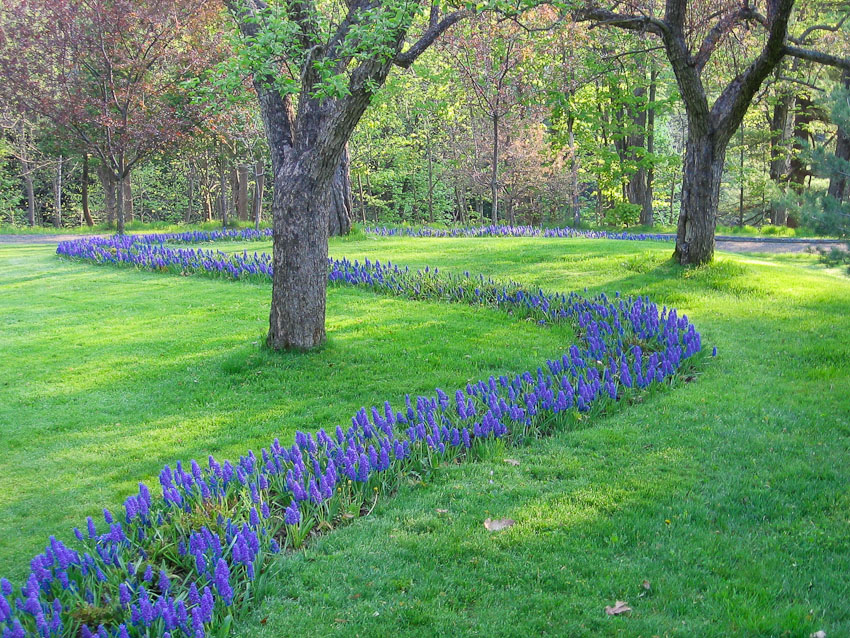
The band of muscari that whips its way across the grass at Glen Villa was inspired by a photograph on the front of a garden catalogue. I later learned that the photo was taken at Keukenhoff. So Cruickshanks’ cover photo was inspired by someone else’s creation, too.
Almost anything can be an inspiration if we open our minds to the possibilities. (I rule out muses, however.) Shadows on a sidewalk made me wonder if I could incorporate fleeting sensations into a garden setting in a permanent way. ( I haven’t yet figured out how. Something to do with sound might work.) An Australian novel whose name I forget inspired me to think about a sign we see in malls or on place maps all over the world. The little red dot that indicates ‘You Are Here’ determined the colour and shape of the place-making signs that became guides for the art installation In Transit/En Route.
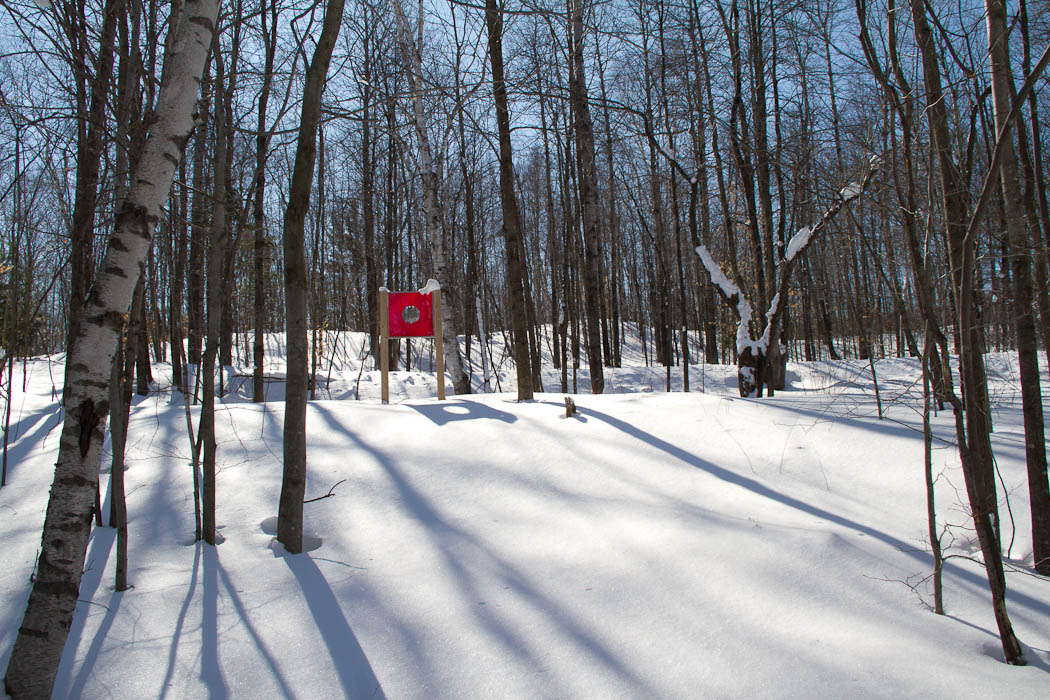
A red dot inspired this sign, along the In Transit path. Instead of telling the viewer where they are, the sign asks questions. Where are you? Are you here?
Copying other people’s ideas is a long and honourable tradition in garden design — and in many other spheres. The dining table at Villa Lante in Italy was inspired by descriptions of ancient Roman gardens.
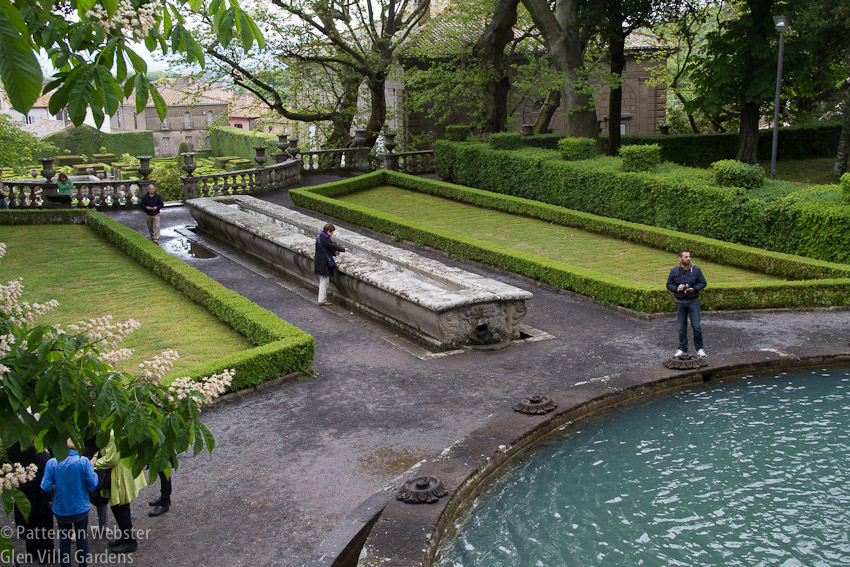
Water moves along the length of the dining room table at Villa Lante, cooling drinks as it did in Roman gardens before it.
Did that table in turn inspire a similar one at Chanticleer in Pennsylvania?
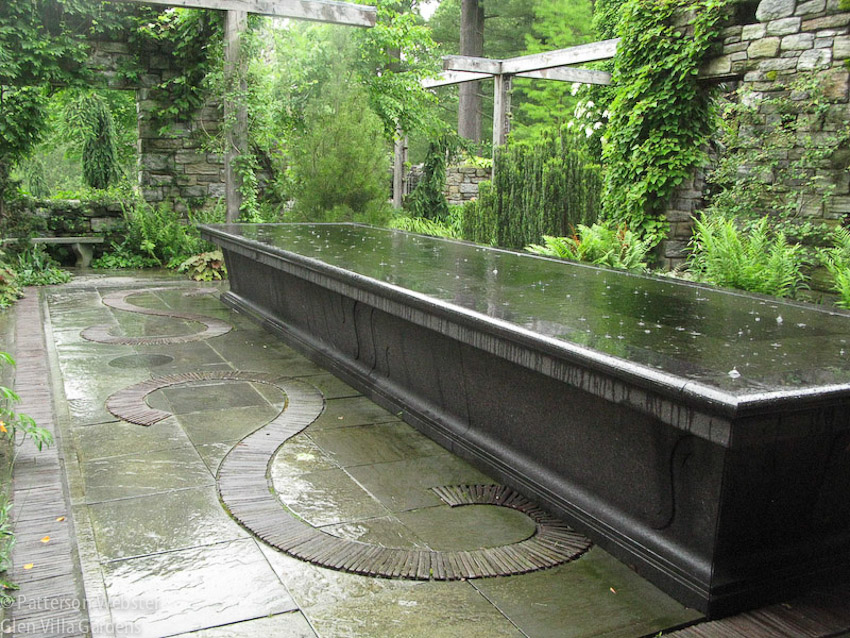
The table at Chanticleer is made of heavier stuff than the one at Villa Lante but the design similarities can’t be missed.. It was raining when I took this photo, wetting the tabletop in a most appealing way and making the similarities even more striking.
The source of inspiration seems less important to me now than what it leads to. A column is a traditional way to recognize and honour a hero. Think of Nelson’s Column in Trafalgar Square, or any one of many other memorializing columns around the world.
When my husband retired as a journalist, after many years of writing a newspaper column, I was inspired to make a column for him. The shape is traditional, the materials contemporary. And appropriate — the glass column is filled with a stack of newspapers.
I made it for him, but what it reflects is me.
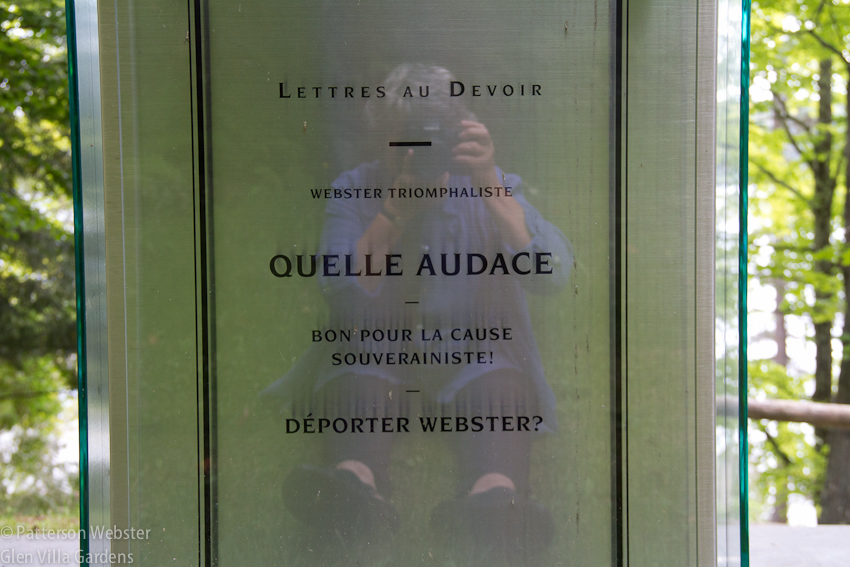
The photographer is reflected in the glass and stainless steel that is part of Webster’s Column, a sculpture I made to honour my husband’s career as a journalist. The quotations are from headlines on letters to the editor, complaining about his strongly held political views.
Reflecting on reflections, I remember the old saying, that imitation is the sincerest form of flattery. Imitation, copying, duplication: what are they except different types of reflections?
And perhaps, more interesting than the literal ones.


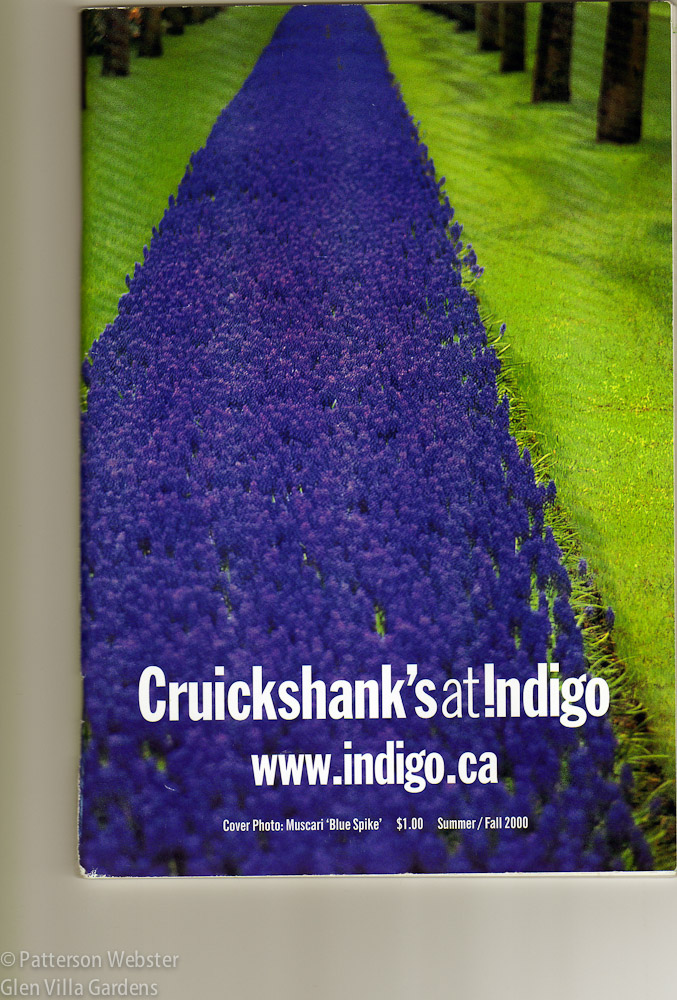
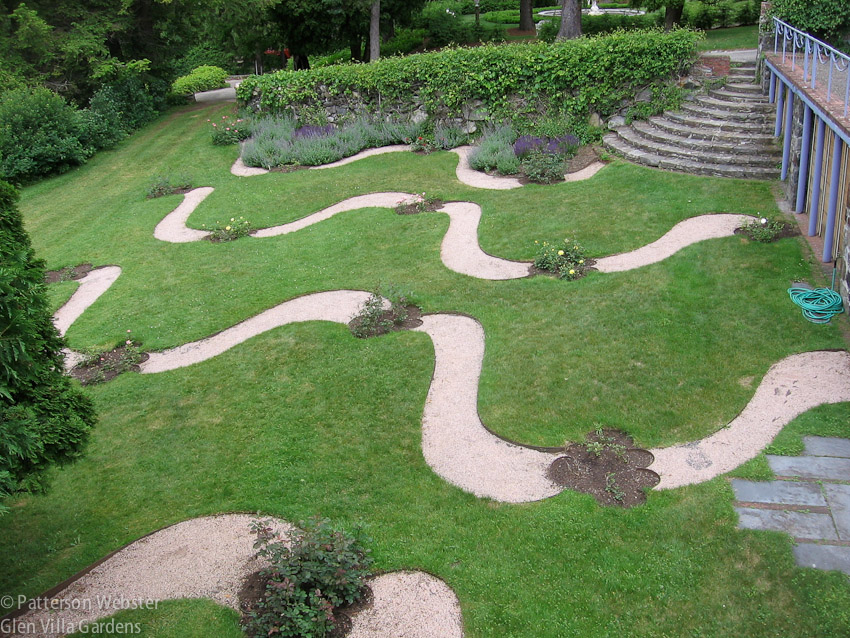
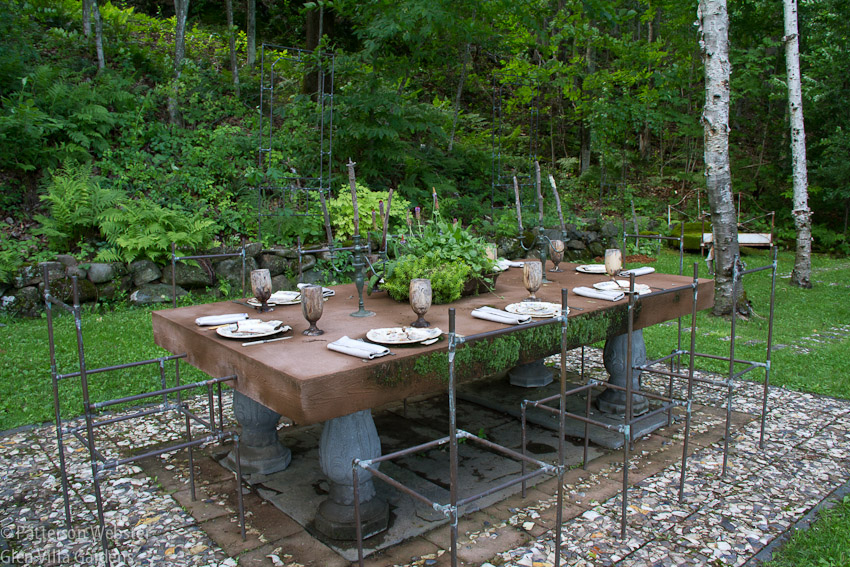




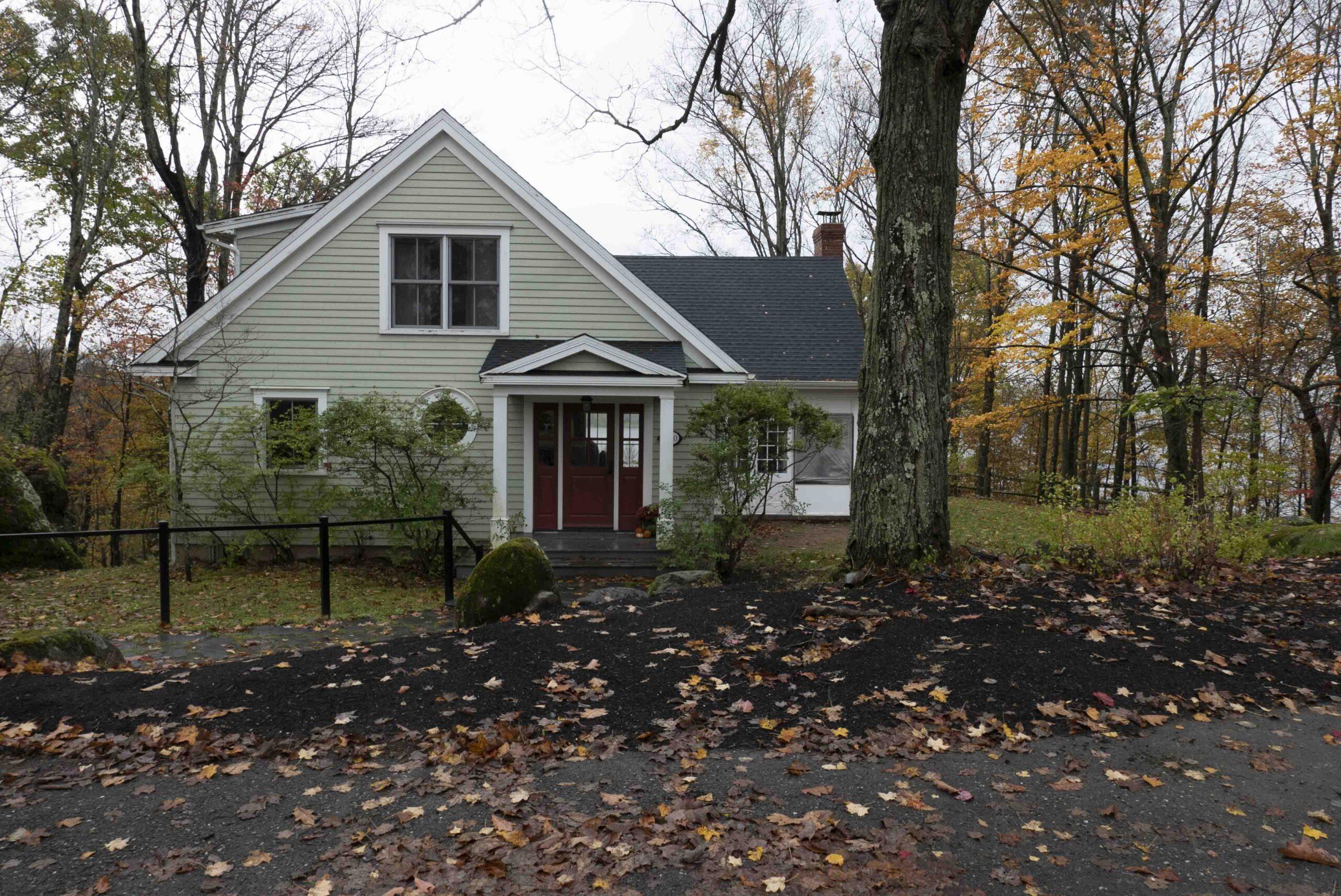
Beautifully crafted post.
Thank you for this comment, Allan. I truly appreciate it.
You have become a source and now to reflect and create!
I would be delighted if I inspired others to re-create some project or idea of mine.
I just might have to do an eBook of your garden!
Why not?
I can’t think of any reason not too so I am going to start putting it together and finish it off in time for the dull season this fall or sooner!
Wonderful pictures, and I agree it isn’t cheating. Your not duplicating, your using your imagination to recreate your own version of something that inspired you. Wonderful!
Thank you, Matt. Reminding myself of how things came to be was almost inspirational in itself. And fun.
Saw your comment at enclosure and realized I had not visited you in a while. Wonderful thoughtful post esp. since my garden has a pond and we often talk about reflections, light effects. As a former newspaper columnist and editorial writer I now know why I was so instantly taken the first time I saw that piece on your site. Snowdrops buried under a load of snow here today
Linda, it’s nice to hear from you — thanks for the visit. We don’t have snowdrops yet, but soon I hope. First comes mud season, though!
It’s generous of you to share your inspirations with us, rather than claiming all your ideas as your own. It is the generosity of a noble mind. The fact that you have archives of your inspirations is inspiring in and of itself. I, too, really like Steele’s fluid paths at Naumkeag. I would like to recreate that shape somehow in my garden, which is mostly rectangular. Thank you for a most inspiring post.
I’ve been reviewing my photos and mentally revisiting places where others have copied and adapted ideas from other gardens — finding lots of examples. I’ll be posting about that later today, I think. I’m happy to know that you enjoyed the post. It was fun to write.